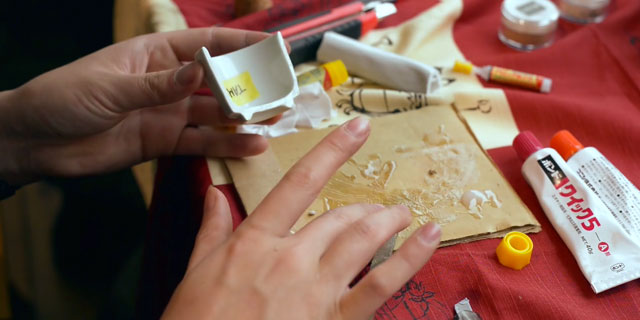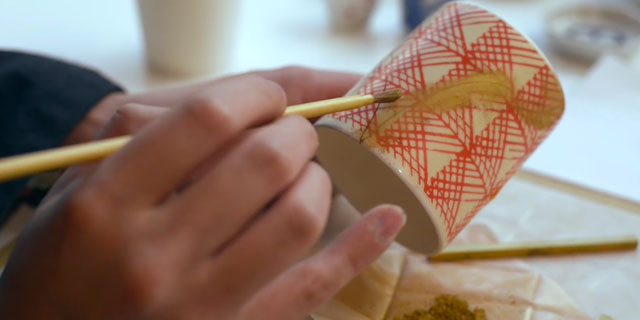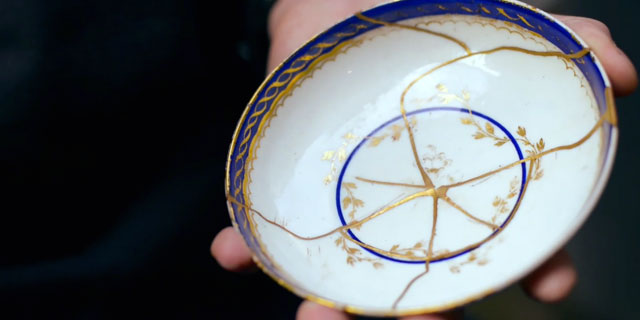
Every frame repair that we see here at Ruckus tells a story. “I was leading the Master’s A field when I hit that keg…” “A mountain lion was chasing me down this rocky ravine…” “I forgot about the roof rack…” We see it all, and we think it’s great when customers share these tales with us.
Recently, while thinking about these stories we ran across a cool video and it struck a chord. It rang especially true in the context of what we do here every day with our repairs at Ruckus.
Produced by Greatcoat Films, the video helps explain the Japanese repair technique of kintsugi. It’s a centuries old process of repairing broken pottery with lacquer and powdered gold or platinum, which ends up producing beautiful, uniquely repaired objects. The results of these repairs are so good looking and one-of-a-kind that people now will deliberately shatter pieces of pottery so that they can be restored this way. The friendly folks at Greatcoat were generous enough to let us share their work as it relates to ours. Check it out.
This concept of kintsugi extends beyond pottery to a broader philosophy of repair. The technique highlights and celebrates repair rather than making any attempt to disguise it. Flaws, scars, stitches, patches aren’t hidden but, rather, they’re proudly displayed as enduring marks that tell a story.
According to this philosophy, damage and repair are considered important parts of the history of an item. Cracks, scars and patches don’t represent the end of the life of an object, but rather defining moments in its history. Like the duct tape patch on your climbing jacket, that gash in your camping stove or the long scar down your forearm from that July 4th incident… These marks help define who we are.
A bike leaving Ruckus carries the story of repair. We think that much of the value of the things we own comes from the way we’ve left our own personal, enduring marks on them. We’re into the idea of celebrating resilience and highlighting the craftsmanship of good repair by calling out beautifully repaired breaks. They’re badges of courage, conversation starters, battle scars and there is a particular pride in owning an object that carries these badges. It’s an object that’s been around for a long time, something that year by year has been made unmistakably our own.

After watching the video last week it was clear that I was going to need to smash something. For science. I brought a tea towel, a hammer, a standard IKEA coffee saucer and a beer onto the front porch. It was a sunny afternoon and I reveled in smashing my ceramic kitchenware to pieces while the neighbors looked on.
I swept up the shattered remnants and laid them carefully on the kitchen table for repair. After a few hours, a jar of epoxy, some gold paint and mild swearing, I had a saucer again. My repair was inelegant—the work of an amateur—but I ended up with an object that is once again usable. One that is distinguishable from any other and that has a story to tell people over a coffee.
Studying the art and science of repair, we’ve got some fun projects on the horizon …stay tuned.
